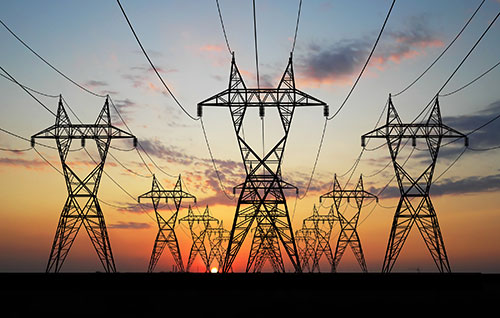Power-Intensive Site Selection
Manufacturers should prioritize accuracy in their load schedule, as there’s a downside to both underestimating and overestimating load requirements.
Q3 2023

“Fast is fine, but accuracy is everything.” — Wyatt Earp
When siting a new manufacturing facility, best-guessing load requirements can often lead to delayed schedules and potential production setbacks. Electrical equipment lead time, engineering backlogs, as well as transmission and capacity constraints make underestimating load requirements in today’s environment particularly unforgiving.
Less obvious, however, are the opportunity costs associated with overestimating your load schedule. Inflated power demands have the potential to pull the reigns on your speed-to-market strategy by discounting infrastructure and locations that can scale with your needs. Similarly, overly aggressive load schedules and service delivery timelines eliminate otherwise viable locations prematurely in the site selection process.
Hastily engineered timelines and ravenous electricity specifications can come at a cost. One other, perhaps less considered, impact of overestimating electric loads is the potentially conflicting effect that such practices can have on the host utility’s decarbonization efforts. New generation goes through a multi-year load forecasting process. If that process is front-end loaded with artificially large loads, generation investments can be skewed, resulting in potentially escalated costs and higher carbon content.
Accuracy, not conservative estimates, should be prioritized at the outset of the project by first collecting a list of the expected electrical loads of the facility including mechanical equipment involved in production, as well as secondary loads such as HVAC and other utility systems. For many industries, this may require project teams to build load schedules for different investment and operating scenarios. These schedules will serve as the basis for sizing the transformers that will ultimately need to be secured by your power company, along with the switchgear the end user will need for the facility.
While it’s common for electric utilities to be asked to confirm an 18-month service delivery in the early stages of site selection, the reality is that only carefully design-engineered electrical loads will stand the chance of traversing today’s headwinds to meet these timeframes. Just a few years ago, this might not have been the case. A great site combined with a not yet blindsided supply chain stood a real chance. Today, however, lead times for equipment are broadsiding the development community.
Inflated power demands have the potential to pull the reigns on your speed-to-market strategy. Transformers across most voltage classes are still up more than 300 percent from their 2020 lead times, some taking 36 months or more from order to delivery. Switchgear is being quoted up to 75 weeks, with lead times getting longer. Wire and cable, panel boards, circuit breakers, and other electrical supplies are still experiencing record demand as growth industries such as data centers and energy storage manufacturers double down on long-term procurement strategies to meet customer obligations. For much of this equipment, it will be years before supply chains begin to stabilize.
Wyatt Earp, a gunslinger, lawman and gambler of the American West was quoted as saying, “Fast is fine, but accuracy is everything”. When it comes to electric service delivery, early, transparent, and frequent project communication with utility providers wins the day. Do not let overly eager electricity demands and construction schedules slow the draw on your next site.
Project Announcements
Green Fuels Plans Acadia Parish, Louisiana, Operations
05/28/2025
Canada-Based AVL Manufacturing Plans Charlotte, North Carolina, Manufacturing Operations
05/27/2025
Germany-Based Volektra Establishes El Dorado Hills, Headquarters Operations
05/26/2025
Apex Power Conversion Establishes Mesa, Arizona, Headquarters Operations
05/24/2025
Canada-Based Damera Corporation Plans Peoria, Illinois, Assembly Operations
05/21/2025
Reworld Plans Park Hills, Missouri, Material Processing Operations
05/16/2025
Most Read
-
20th Annual Area Development Gold and Silver Shovel Awards
Q2 2025
-
First Person: Joe Capes, CEO, LiquidStack
Q2 2025
-
The Legal Limits of DEI in Incentives Agreements, Hiring, and Contracting
Q2 2025
-
From Silicon to Server: Mapping the Data Center Supply Chain
Q2 2025
-
39th Annual Corporate & 21st Annual Consultants Surveys: What Business Leaders and Consultants Are Saying About Site Selection
Q1 2025
-
Rethinking Life Sciences Site Selection in a Resilient and Dynamic Market
Q2 2025
-
Top States for Doing Business in 2024: A Continued Legacy of Excellence
Q3 2024



